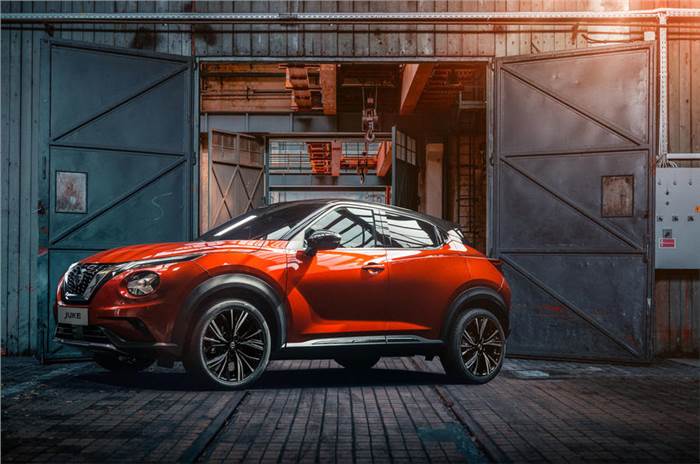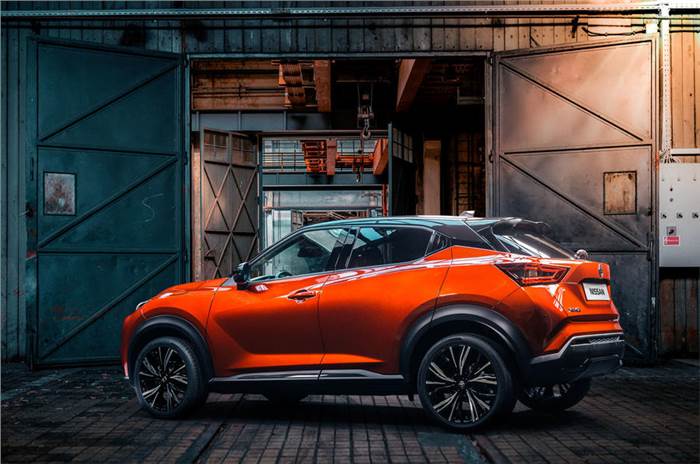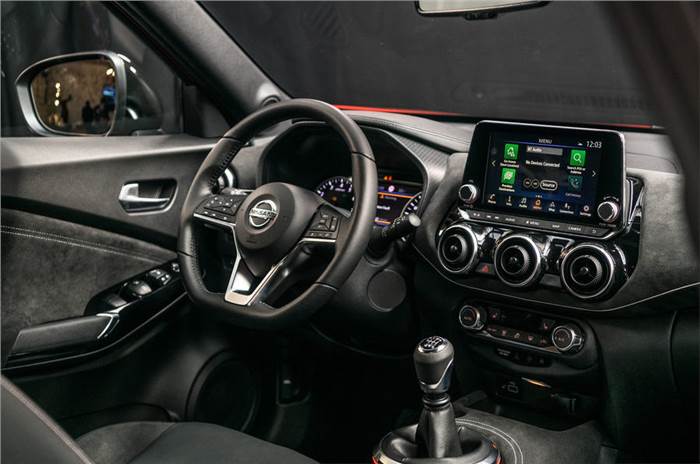Nissan has revealed the second-generation Juke, claiming that the trendsetting compact crossover has “grown up”, with improved performance and practicality.
The original Juke was launched in 2010, and Nissan has sold nearly one million examples since then but having effectively founded the compact crossover class, it faced increased competition from a glut of new arrivals.
Nissan sold 67,763 Jukes in Europe last year, compared to more than 1,00,000 a year between 2011 and 2013, according to figures compiled by Jato Analytics. By comparison, Renault sold 1,21,970 examples of the Captur in 2018.
The Juke has received a thorough makeover for its second generation, with sharper lines and a bold new grille, but it retains some of the original model’s defining features, including large, round headlights underneath the thin daytime running lights and the ‘floating’ coupé-style roof design. What's a first for the Juke is that the second-gen model sits on 19-inch alloy wheels for higher-spec versions.
The new Juke is built on the Renault-Nissan-Mitsubishi Alliance’s CMF-B platform, which also underpins the Renault Captur and Clio. As a result, the new Juke measures 4,210mm long, 1,595mm tall and 1,800mm wide, making it 85mm longer and 170mm wider than the outgoing model, but 30mm lower. The wheelbase is also 105mm longer.
Despite the increased size, the use of more high-strength steel in the new platform has helped make it 23kg lighter. Nissan claims the new platform is more rigid and “offers better stability, performance and cornering capabilities”.
Nissan says knee room in the rear has been extended by 58mm and the boot is 422 litres, substantially up from the 354 litres of the previous model. To aid the focus on interior comfort, ‘monoform’ seats – like those in the latest Qashqai – are standard and can be optioned with Alcantara or leather upholstery.
Nissan will launch the new Juke with just one engine option: a 1.0-litre, three-cylinder turbo making 117hp, and taken from the Nissan Micra. It will be available with a 6-speed manual or 7-speed automatic.
The firm remains coy on future engine plans, but development boss Matthew Ewing said the company is “evaluating options for extending the powertrain line-up.” Ewing did, however, confirm no diesel engines would be offered.
Expect a higher-powered 1.5-litre petrol at a later stage, and eventually a Nismo, which would likely outperform the current generation’s 200hp output.
Given the new Captur will gain a plug-in hybrid model, an electrified powertrain could also reach the new Juke at some point.
Ewing also confirmed the platform had not been developed for a pure electric powertrain, adding that Nissan did not yet know if a third-generation Juke would offer a zero-emission model. It may choose to only offer electric in standalone models, as it currently does with the Leaf.
For the first time, the Juke will be offered with the latest version of Nissan’s ProPilot driver assistance systems, including steering and braking assist. It will also be available with the most recent version of the NissanConnect infotainment system, which uses an 8.0-inch touchscreen and is compatible with Apple CarPlay and Android Auto. The audio set-up can be upgraded with an 8-speaker Bose sound system.
The new Juke is said to be the "most connected Nissan yet" with features including over-the-air updates, Wi-Fi (for a monthly fee) and remote locking, plus the ability to check the health of your car via an app.
The Juke will be offered in five trim levels, starting with the Visia models, going up to the range-topping Tekna+. Buyers who opt for Tekna+ trim will get to choose the colour of the body, roof and interior upholstery, as well as customise the bumpers and side sills.
Also see:
2020 Nissan Juke image gallery
Nissan India appoints Rakesh Srivastava as new Managing Director
2019 Nissan Kicks long term review, first report
Click here for all Nissan India models, prices, reviews, images, videos and more











Comments
Member Login
Personal Details
No comments yet. Be the first to comment.